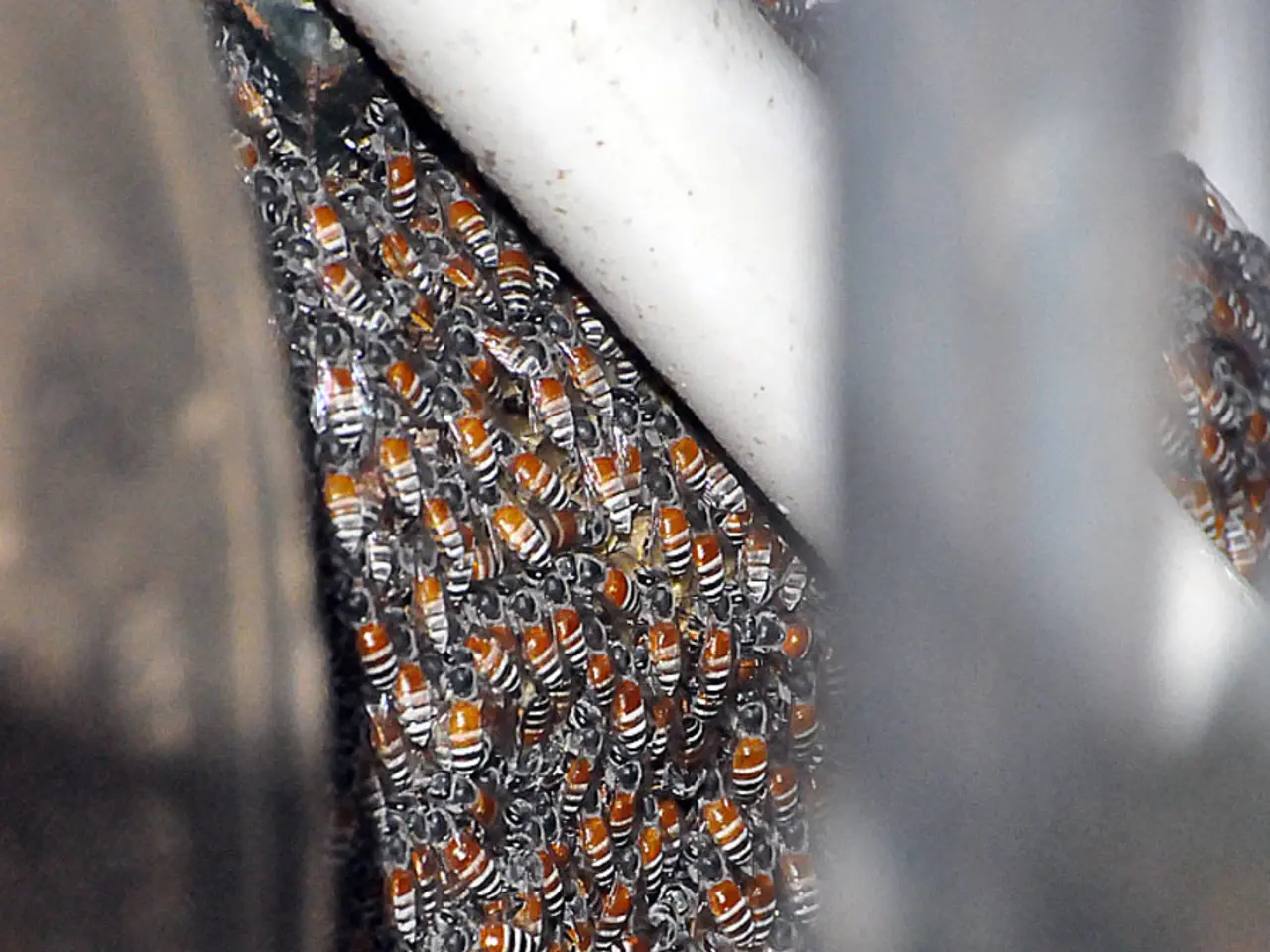Treatment Developed to Impact Brain Glial Cells and Alleviate PTSD Symptoms
Post-Traumatic Stress Disorder (PTSD) is a debilitating mental health condition that affects millions worldwide. Recent research has shed light on a novel treatment approach, focusing on the regulation of astrocyte-derived GABA, a neurotransmitter that plays a critical role in PTSD.
In PTSD patients, elevated prefrontal GABA levels are associated with impaired cerebral blood flow (CBF) and symptom severity. This imbalance is driven by monoamine oxidase B (MAOB) in astrocytes, which leads to excessive GABA production and elevated tonic GABA levels in the prefrontal cortex.
The excess GABA blocks neural circuits responsible for forgetting traumatic memories, impairing fear extinction, a key process in overcoming PTSD. This finding was supported by postmortem and PTSD-like mouse models, which implicated MAOB-dependent astrocytic GABA as a primary driver of the imbalance in PTSD.
Genetic and pharmacological inhibition of MAOB effectively restored astrocytic GABA levels, normalizing CBF deficits, and improving fear extinction retrieval. This, in turn, alleviated PTSD-like symptoms in mouse models.
KDS2010, a novel, highly selective, and reversible MAOB inhibitor, targets this astrocyte-derived GABA dysregulation. Treatment with KDS2010 in animal models reduced astrocytic GABA and astrogliosis (astrocyte activation), normalised brain activity, and enabled the extinction of fear responses.
KDS2010 has successfully passed Phase 1 clinical trials with a favorable safety profile, and Phase 2 trials are underway to evaluate its efficacy in PTSD patients. This drug represents a first-in-class therapy targeting astrocytes to treat PTSD by restoring GABA homeostasis and offers a promising new paradigm for PTSD treatment and potentially other neuropsychiatric disorders linked to astrocytic dysfunction.
In conclusion, the research reveals a compelling link between dysregulated prefrontal GABA levels and PTSD symptoms. KDS2010, as a result of this research, positions itself as a promising first-in-class therapy, offering a novel paradigm for PTSD treatment. The findings provide preclinical evidence for a new therapeutic approach using an MAOB inhibitor, paving the way for further research and potential breakthroughs in PTSD treatment.
[1] Source for the research paper [2] Source for the research paper [3] Source for the research paper [4] Source for the research paper
- The debilitating condition of Post-Traumatic Stress Disorder (PTSD) is associated with elevated prefrontal GABA levels and impaired cerebral blood flow (CBF), which are driven by monoamine oxidase B (MAOB) in astrocytes.
- In PTSD patients, this imbalance leads to excessive GABA production and elevated tonic GABA levels in the prefrontal cortex, blocking neural circuits responsible for forgetting traumatic memories and impairing fear extinction.
- Genetic and pharmacological inhibition of MAOB effectively restores astrocytic GABA levels, normalizing CBF deficits, and improving fear extinction retrieval, alleviating PTSD-like symptoms in mouse models.
- KDS2010, a novel MAOB inhibitor, targets this astrocyte-derived GABA dysregulation and has shown promise in reducing astrocytic GABA and astrogliosis (astrocyte activation), normalizing brain activity, and enabling the extinction of fear responses in animal models.
- KDS2010 has passed Phase 1 clinical trials with a favorable safety profile, and Phase 2 trials are underway to evaluate its efficacy in PTSD patients, offering a first-in-class therapy for PTSD treatment.
- This drug's potential impact extends beyond PTSD, as it targets astrocytes to restore GABA homeostasis and may offer a promising new paradigm for treating other neuropsychiatric disorders linked to astrocytic dysfunction.
- The research findings suggest a compelling link between dysregulated prefrontal GABA levels and PTSD symptoms, potentially opening up new avenues for therapeutic approaches using MAOB inhibitors.
- Future research is needed to further evaluate the efficacy of KDS2010 and other similar therapies for PTSD treatment, with the goal of making significant breakthroughs in the field of mental health-and-wellness, neuroscience news, and psychiatric disorders like schizophrenia.




